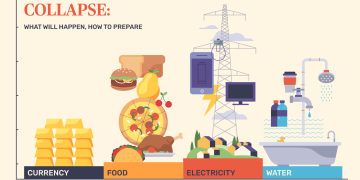In recent months, China’s A-share market has witnessed a significant resurgence of foreign capital inflows after a period marked by cautious foreign participation and intermittent outflows. This renewed wave of international investment is drawing widespread attention, as market participants and analysts debate whether the return of foreign investors can serve as a meaningful catalyst to propel the A-share market to new highs, breaking through prior resistance levels and sustaining long-term growth momentum.
This article provides an in-depth analysis of the forces driving foreign capital back into the A-share market, evaluates the potential market and economic impacts, and assesses the key risks and conditions that will determine whether this inflow can translate into a sustained market breakout.
The Context of Foreign Capital in China’s A-Share Market
Historical Overview
Over the past decade, China’s A-share market has gradually opened to foreign investors through a series of policy initiatives such as the Qualified Foreign Institutional Investor (QFII) program, the Renminbi Qualified Foreign Institutional Investor (RQFII), and more recently, the Stock Connect programs linking mainland China exchanges with Hong Kong. These initiatives have facilitated easier access and increased transparency, encouraging global investors to allocate capital into one of the world’s largest and most dynamic equity markets.
Foreign participation had seen a steady increase until geopolitical tensions, regulatory crackdowns, and global risk aversion led to significant volatility and partial retrenchment over the last few years. However, recent policy signals from Beijing emphasizing market openness and stabilization have rekindled interest from overseas investors.
Why Foreign Investors Matter
Foreign institutional investors bring not only capital but also global investment expertise, longer-term perspectives, and increased market sophistication. Their participation tends to improve market liquidity, promote better governance standards, and enhance price discovery mechanisms. Consequently, a robust presence of foreign investors is widely seen as an indicator of international confidence in the market’s prospects.
Drivers Behind the Recent Surge in Foreign Capital Inflows
Several key factors have contributed to the renewed influx of foreign capital into A-shares:
1. Improved Market Accessibility
The expansion and refinement of access channels have made it easier and more efficient for foreign investors to enter China’s domestic equity markets. The Stock Connect schemes have been broadened, allowing more types of investors and products to participate, while QFII and RQFII quotas have been increased or simplified. Additionally, the inclusion of more A-shares in global indices such as MSCI, FTSE Russell, and S&P Dow Jones has prompted index-tracking funds to boost allocations.
2. Attractive Relative Valuations
Despite recent gains, valuations in many segments of the A-share market remain compelling when compared to global peers, particularly in sectors like technology, consumer discretionary, healthcare, and clean energy. The domestic market’s growth potential, backed by China’s expanding middle class and ongoing innovation, offers foreign investors opportunities for attractive risk-adjusted returns.
3. Policy Clarity and Reform Signals
Beijing’s renewed commitment to regulatory transparency and market-friendly reforms has helped ease some of the uncertainties that had previously deterred foreign participation. Measures aimed at improving intellectual property protection, corporate governance, and market supervision signal a more mature and stable investment environment.
4. Diversification Needs and Global Context
In a world grappling with geopolitical tensions, slowing growth in developed markets, and shifting monetary policies, investors seek diversification and exposure to emerging economies with solid growth trajectories. China’s unique position as the second-largest economy with ongoing structural reforms makes its equity markets an attractive destination.
Potential Impact of Foreign Capital on the A-Share Market
1. Enhancement of Market Liquidity and Depth
The influx of foreign capital generally contributes to higher trading volumes and improved liquidity, which reduces transaction costs and helps narrow bid-ask spreads. Enhanced liquidity makes the market more attractive to all investors, including domestic retail and institutional participants, fostering a more vibrant and stable trading environment.
2. Valuation Re-Rating and Benchmark Influence
Sustained foreign buying can exert upward pressure on valuations, particularly for blue-chip stocks favored by global institutions. Inclusion in major global indices compels passive funds to invest in these stocks, which can trigger further price appreciation. This re-rating effect can help the A-share market break through previous resistance levels and establish new benchmarks.
3. Sectoral Capital Allocation and Structural Upgrading
Foreign investors often have sector preferences based on growth potential, governance standards, and global relevance. Increased foreign participation can accelerate capital flows toward sectors such as technology, healthcare, and green energy, supporting China’s economic transition from heavy industry and exports toward innovation-driven growth. This can stimulate structural upgrades in the economy and influence corporate behavior.
4. Improved Corporate Governance and Market Practices
The presence of global institutional investors often encourages higher standards of corporate governance, transparency, and sustainability disclosures. Companies seeking to attract and retain foreign investment may adopt better management practices and enhanced investor communications, which contribute to the overall market quality.
Challenges and Risks
While the return of foreign capital offers multiple benefits, it also brings certain challenges and risks:
1. Geopolitical and Regulatory Uncertainties
Tensions between China and other major economies, particularly the United States, continue to pose significant uncertainties. Trade disputes, technology bans, and geopolitical frictions can lead to sudden shifts in investor sentiment, triggering volatility and potentially curbing foreign inflows.
Furthermore, China’s evolving regulatory environment—although more transparent—can still present risks, especially in sensitive sectors such as technology, education, and real estate, where policy shifts have previously led to market turbulence.
2. Volatility from Rapid Capital Movements
Foreign capital tends to be more sensitive to global risk sentiment and liquidity conditions. Large inflows may be followed by swift outflows if global or domestic conditions deteriorate, potentially amplifying market swings and increasing volatility.
3. Structural Market Limitations
Despite progress, certain structural constraints remain, such as restrictions on foreign ownership in specific sectors and limited options for hedging currency risk. These factors can limit the breadth and flexibility of foreign investment strategies, influencing overall inflow sustainability.
4. Macroeconomic and Corporate Earnings Risks
The trajectory of China’s economic growth and corporate profitability will be critical. Any significant slowdown, credit stress, or earnings disappointments could dampen investor enthusiasm and stall the inflow momentum.

Can Foreign Capital Propel the Market to New Heights?
For foreign capital inflows to translate into a sustained market breakthrough, several key conditions must be met:
1. Policy Stability and Reform Continuity
Consistent and predictable policies regarding market openness, regulation, and economic reforms are essential to maintaining foreign investor confidence. Mixed signals or abrupt regulatory changes can undermine trust and lead to capital flight.
2. Strong Economic Fundamentals
China’s broader economic outlook must support corporate earnings growth. While the recovery from pandemic disruptions is underway, challenges such as property market corrections, debt levels, and global demand uncertainties require ongoing monitoring.
3. Global Environment Support
Global liquidity conditions and geopolitical risks significantly influence capital flows. Accommodative monetary policies in major economies and easing geopolitical tensions would create a favorable backdrop for risk-taking and emerging market investment.
4. Domestic Investor Participation
While foreign inflows are important, domestic institutional investors and retail participation are critical for sustaining market momentum. A balanced investor base reduces dependence on any single group and fosters stability.
Strategic Outlook for Investors
For Domestic Investors
The return of foreign capital can improve market quality and offer validation of investment themes. Domestic investors can benefit from the increased liquidity and focus on high-quality, growth-oriented companies that attract global attention.
For Foreign Investors
Foreign participants should carefully assess the evolving regulatory landscape and economic trends, balancing opportunities in growth sectors with risks inherent in market volatility and policy shifts. Engaging with local partners and maintaining flexibility will be key to navigating this complex environment.
Conclusion
The resurgence of foreign capital inflows into China’s A-share market marks a pivotal development with the potential to reshape market dynamics significantly. Improved access, attractive valuations, policy clarity, and global diversification needs are driving this trend.
While foreign participation can enhance liquidity, support valuations, and accelerate structural shifts, realizing a sustained market breakthrough depends on a confluence of stable policy frameworks, strong economic fundamentals, supportive global conditions, and diversified investor engagement.
Investors and market watchers must remain vigilant, continuously evaluating the interplay between domestic reforms, international capital flows, and geopolitical developments to effectively navigate and capitalize on the evolving landscape of China’s equity markets.



































